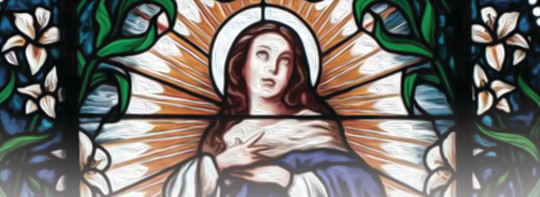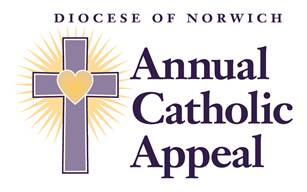Sunday is the day on which the paschal mystery is celebrated and is to be observed as the foremost holy day of obligation in the universal Church. Holy Days of Obligation are our most important feast days. They are the principal liturgical feasts that honor the mysteries of the Lord, the Virgin Mary, and the saints. We call them obligations because the Precepts of the Catholic Church tell us that celebrating those feast days is a part of the minimum level of commitment to the Catholic faith. These are the days in the Catholic Church on which faithful followers are obliged to attend Mass. They include: the Nativity of our Lord Jesus Christ, the Epiphany, the Ascension, the Body and Blood of Christ, Holy Mary the Mother of God, her Immaculate Conception, her Assumption, Saint Joseph, Saint Peter and Saint Paul the Apostles, and All Saints.
These ten are the exact holy days of obligation celebrated in Vatican City but there is some variation throughout the world as a result of Canon 1246 §2 which states: “With the prior approval of the Apostolic See, however, the conference of bishops can suppress some of the holy days of obligation or transfer them to a Sunday”. So different countries around the world may celebrate different holy days of obligation (apart from Sunday, which is celebrated universally throughout the world). Christmas and Easter (which always falls on Sunday) are the highest-ranking holy days, and the Immaculate Conception is the feast for the United States. A solemnity is the highest ranking holy day in the Church calendar.
On December 13, 1991 the members of the National Conference of Catholic Bishops of the United States of America made the following general decree concerning holy days of obligation for Roman Rite Catholics:
- Mary, Mother of God (always celebrated January 1, but if this occurs on a Saturday or a Monday there is no obligation to go to Mass)
- Ascension (this is celebrated on different days depending on where you live; the traditional date, which is the Thursday of the sixth week of Easter, or, as is the case in most U.S. diocese, the seventh Sunday of Easter.) The Diocese of Norwich did not transfer this Holy Day to the weekend and it is observed on the Thursday.
- Assumption of Mary (always celebrated August 15, but if this occurs on a Saturday or a Monday there is no obligation to go to Mass)
- All Saints (always celebrated November 1, but if this occurs on a Saturday or a Monday there is no obligation to go to Mass)
- Immaculate Conception of Mary (always celebrated December 8)
- Christmas (always celebrated December 25)
These two Holy Days have been permanently transferred to Sundays:
- Epiphany (this has been permanently transferred to the first Sunday after January 1)
- The Body and Blood of Christ (this has been permanently transferred to the second Sunday after Pentecost)
Holy Days of Obligation – celebrated on days other than Sundays
Mary, Mother of God
The Solemnity of Mary, the Mother of God is the first Holy Day of the year, celebrated on January 1. This liturgical feast day honors the Blessed Virgin Mary’s motherhood following the birth of the baby Jesus Christ. This holiday is also the Octave of Christmas, or the 8th day of Christmas.
Ascension Thursday
The Feast of the Ascension of Our Lord, the day on which, in the sight of His apostles, Jesus Christ ascended bodily into Heaven, is celebrated 40 days after His resurrection from the dead. It is a Holy Day of Obligation even though in many of the dioceses of the United States, the celebration of the feast has been transferred to the following Sunday. In the Diocese of Norwich, the Feast remains on the Thursday of the Sixth week of Easter.
Assumption of the Blessed Virgin Mary
The Solemnity of the Assumption of the Blessed Virgin Mary commemorates the death of Mary and her bodily assumption into Heaven on August 15.
All Saints Day
All Saints Day arose out of the Christian tradition of celebrating the martyrdom of saints on the anniversary of their martyrdom. When martyrdoms increased during the persecutions of the late Roman Empire, local dioceses instituted a common feast day in order to ensure that all martyrs, known and unknown, were properly honored. All Saints Day is celebrated on November 1.
The Immaculate Conception
The Solemnity of the Immaculate Conception dates back to the seventh century. This feast honors Mary, the Mother of God, and celebrates the Immaculate Conception of the Virgin Mary. The Immaculate Conception refers to the conception of the Blessed Virgin Mary in the womb of Saint Anne where she was exempt from original sin, not the conception of Christ (a common misconception). The Immaculate Conception is celebrated on December 8. This holiday is never abrogated even when December 8 falls on a Saturday or a Monday. If December 8 falls on a Sunday, the celebration of the Immaculate Conception is transferred to Monday, December 9. (This is because Sundays in Advent take precedence over any other feast day).
The Nativity of the Lord
Christmas, the celebration of the birth of Jesus Christ, is the second most important feast in the entire liturgical year, behind only Easter Sunday. The word Christmas derives from the combination of Christ and Mass and is the last Holy Day of Obligation in the year, celebrated on December 25.
Holy Days of Obligation – celebrated on Sundays
Epiphany
The Feast of the Epiphany of Our Lord Jesus Christ is one of the oldest Christian feasts. Epiphany comes from a Greek verb meaning “to reveal,” and all of the events celebrated by the Feast of the Epiphany are revelations of Christ to man.
Easter Sunday
Easter is the greatest feast in the Christian calendar. It is a day of celebration because it represents the fulfillment of our faith as Christians and the promise of new life. On this Sunday, Christians celebrate the resurrection of Jesus Christ from the dead. For Catholics, Easter Sunday comes at the end of 40 days of prayer, fasting, and almsgiving known as Lent. Through spiritual struggle and self-denial, we have prepared ourselves to die spiritually with Christ on Good Friday, the day of His Crucifixion, so that we can rise again with Him in new life on Easter. The Alleluia is sung for the first time since the beginning of Lent.
Pentecost
Pentecost is the birthday of the Church. Christ told the apostles that he would send the Holy Spirit to guide them. On Pentecost, the Holy Spirit came as wind and fire to divinely inspire the apostles in their ministry to bring the teachings of Christ to the world. It is celebrated 7 weeks after Easter.
The Body & Blood of Christ
The Solemnity of Corpus Christi, also known as the Feast of the Body and Blood of Christ, celebrates the Sacrament of Holy Communion which was instituted at the Last Supper on Holy Thursday. It is celebrated nine weeks after Easter.
Christ the King
The Solemnity of Christ the King, or as it is also known, Our Lord Jesus Christ King of the Universe, celebrates Jesus as King and Lord. It is celebrated on the last Sunday of the liturgical year in November.
Celebrated Feast Days (Not Holy Days of Obligation)
Ash Wednesday
Ash Wednesday marks the first day of Lent in the Roman Catholic Church and many Catholics attend Mass to be marked with ashes as a sign of their own mortality. While all Roman Catholics are encouraged to attend Mass on Ash Wednesday in order to begin the Lenten season with the proper attitude and reflection, Ash Wednesday is not a Holy Day of Obligation. It is, however, a day of fasting and abstinence.
Saint Joseph
The Solemnity of St. Joseph, husband of the Blessed Virgin Mary, celebrates the life of the foster father of Jesus Christ. St. Joseph’s Feast Day is March 19.
Holy Thursday/Good Friday
Catholics celebrate Holy Thursday, the Thursday before Easter Sunday, with the Mass of the Lord’s Supper, commemorating Christ’s Last Supper with His disciples before His arrest and crucifixion. While all Roman Catholics are encouraged to attend Mass on Holy Thursday to commemorate the institution of the Sacrament of Holy Communion, the priesthood, and the Mass at the Last Supper, Holy Thursday is not a Holy Day of Obligation.
On Good Friday, we commemorate the crucifixion and death of Jesus Christ with a special service recalling His Passion. While we are encouraged to attend this service in order to prepare most fully for Christ’s resurrection on Easter Sunday, Good Friday is not a Holy Day of Obligation. Good Friday is, however, a day of strict fasting and abstinence. The Liturgy on Good Friday consists of Liturgy of the Word, Veneration of the Cross, and Holy Communion.
The Transfiguration
The feast of the Transfiguration of Our Lord Jesus Christ celebrates the revelation of Christ’s divine glory on Mount Tabor in Galilee. After revealing to His disciples that He would be put to death in Jerusalem, Christ went up the mountain, accompanied by Saints Peter, James, and John. There, Saint Matthew writes, “he was transfigured before them. And his face did shine as the sun: and his garments became white as snow.” The transfiguration is celebrated on August 6.
Saints Peter & Paul
The Solemnity of Saint Peter and Paul, Apostles (June 29), celebrates the two greatest apostles, whose martyrdom established the preeminence of the Church at Rome.



